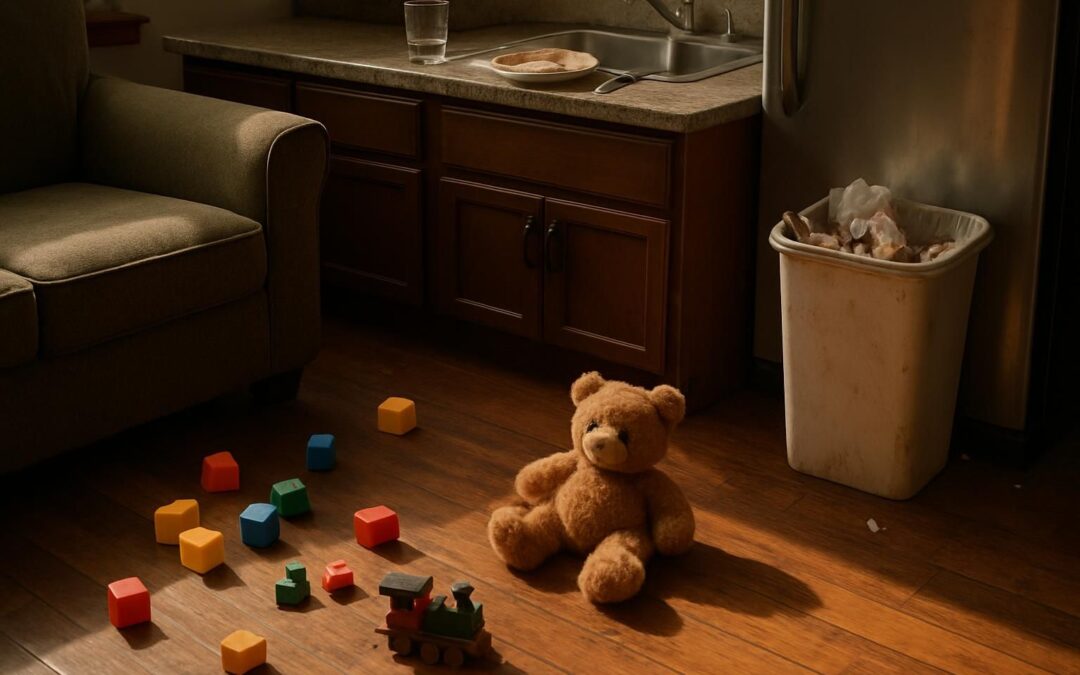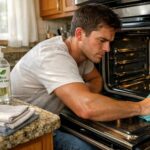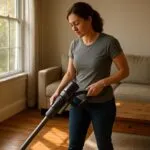Cleaning a home should not feel like running in circles. Many parents and homeowners spend hours scrubbing but still spot stains, sticky spots, or lingering smells. Frustration grows fast when rooms never seem truly clean.
One important fact is that cleaning the right way always starts with understanding the Principles Of Cleaning. These four ideas help make any cleaning routine smarter and easier. This guide will explain each principle step by step, show why they matter, and give real tips anyone can use at home when doing a house cleaning.
Curious how these principles can save time and effort? Keep reading!
Key Takeaways
- The four principles of cleaning are time, temperature, chemistry, and mechanics. These rules work together to help remove dirt and germs effectively.
- Cleaning differs from sanitizing, disinfecting, and sterilizing. Each process has its own role in keeping homes safe by reducing or eliminating microbes on surfaces.
- Using the right cleaning agents matters a lot. Different messes require specific chemicals to break them down without damaging surfaces or leaving harmful residues.
- Safety is crucial when cleaning. Wearing protective gear like gloves and ensuring good ventilation can prevent accidents and health issues from chemical exposure.
- Maintaining tools for cleaning ensures they work well every time. Regular maintenance like rinsing brushes or changing vacuum filters keeps equipment effective against dirt and germs.
Modern cleaning techniques include eco-friendly cleaning methods that use biodegradable cleaning agents. These approaches support effective disinfection and environmental cleaning while reducing chemical residues.
Understanding the Basics of Cleaning
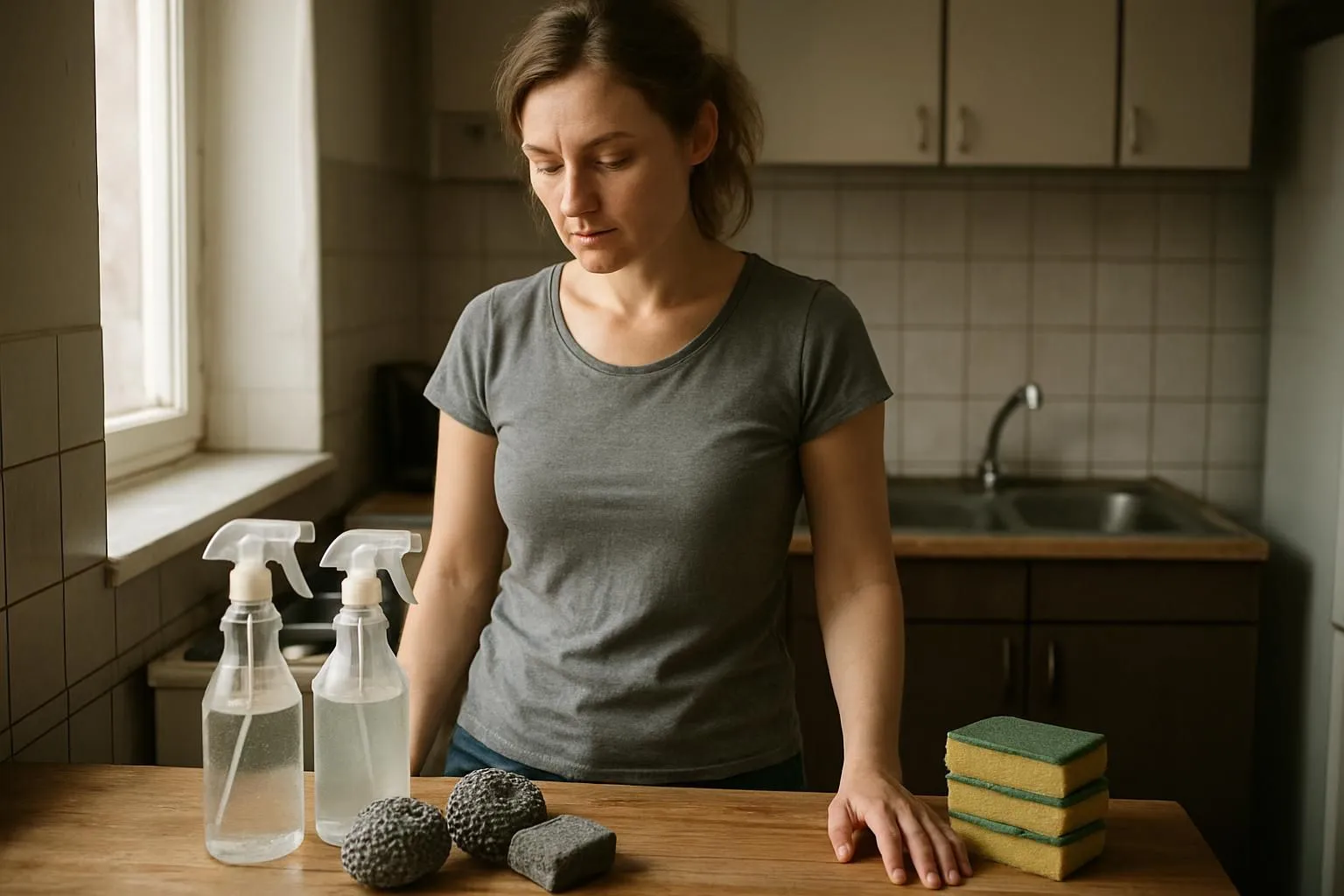
Cleaning starts with knowing what it actually means and how it differs from other methods. A clear understanding helps people pick the right action for each mess, so they’re not fighting grime the wrong way.
Definition of cleaning
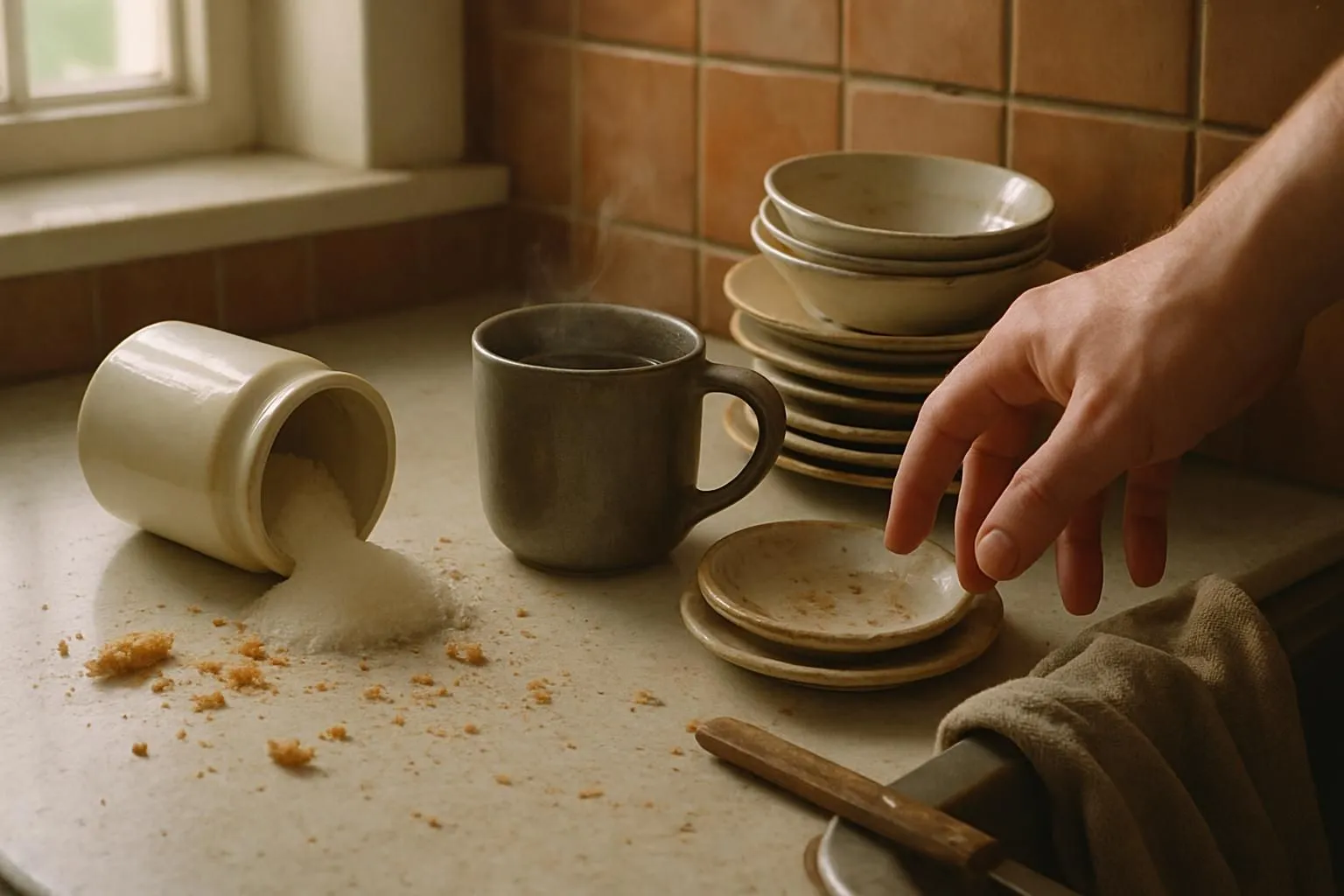
Cleaning means removing stains, dust, grease, and dirt from surfaces. Parents wipe down kitchen counters to get rid of cookie crumbs. House owners sweep their floors to collect pet hair or sand tracked in from the yard.
Scrubbing with detergent washes away impurities that may not be seen by eye.
This first step clears away mess before anyone sanitizes or disinfects a space. Polishing wood tables restores shine so fingerprints disappear like magic. Every swipe or rinse pulls out what does not belong, making each room safer for everyone who enters.
Next comes sorting out how cleaning is different from disinfecting and sanitizing.
Difference between cleaning, sanitizing, disinfecting, and sterilizing
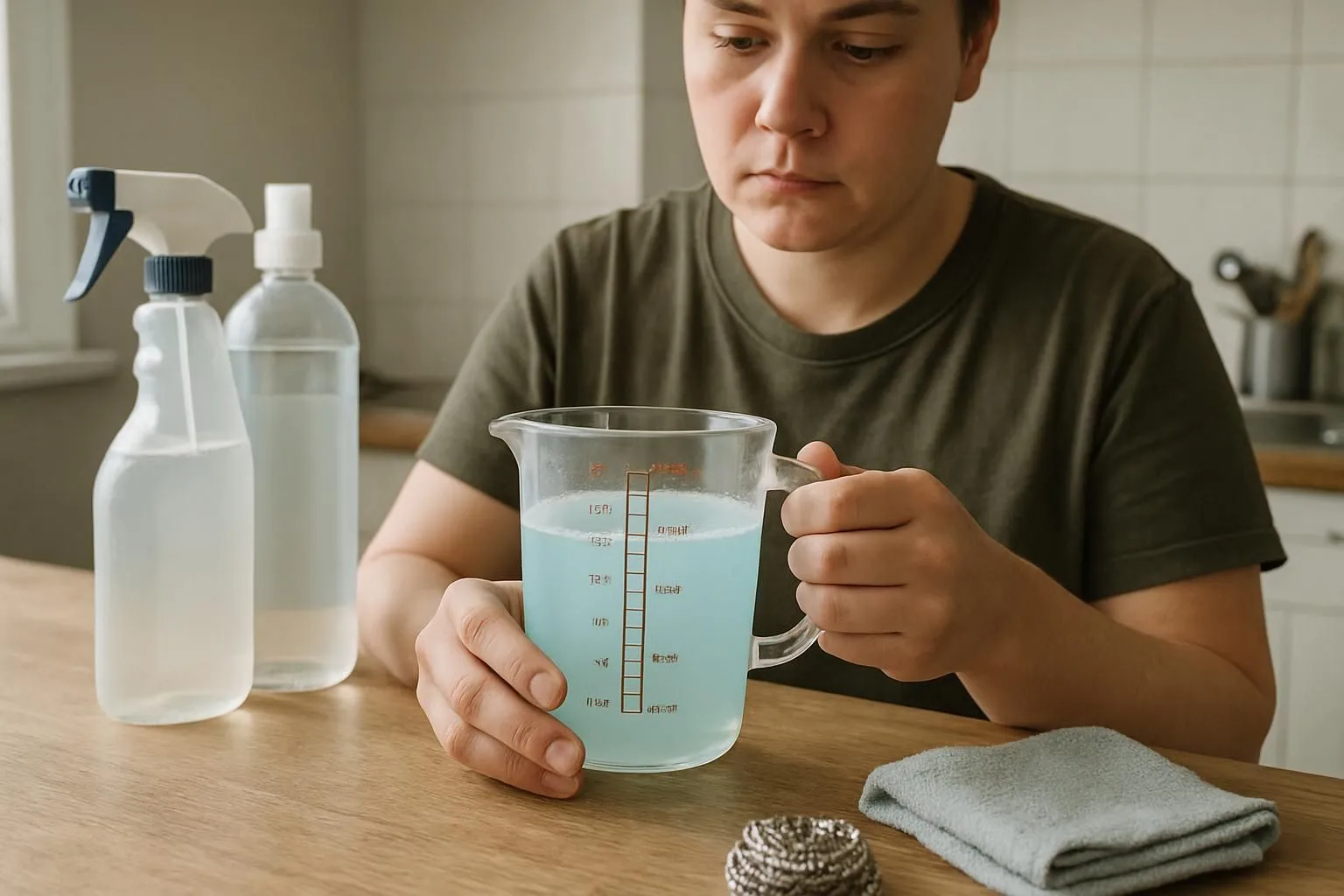
Scrubbing a surface with soap and water removes dirt, dust, crumbs, and some germs. Sanitation goes a step further by reducing the number of pathogens left on surfaces to safe levels as set by public health standards.
Spraying a kitchen counter with a germicidal cleaner after wiping ensures most bacteria get knocked down but does not eliminate every last microbe.
Disinfecting uses strong cleaning agents or biocides to kill many types of harmful organisms. However, these disinfectants must be diluted exactly as directed; mixing them too strong can damage countertops while making them too weak lets germs survive the treatment.
Sterilization wipes out all forms of microbial life including spores think hospital tools steamed at very high temperatures or soaked in powerful chemicals. “Think of sterilizing like hitting the ultimate reset button for decontamination,” says Dr. Anne Carter, an expert in purification methods.
Each level plays its own part in keeping homes healthy and safe from illness-causing bugs lurking on surfaces touched every day.
The Four Principles of Cleaning
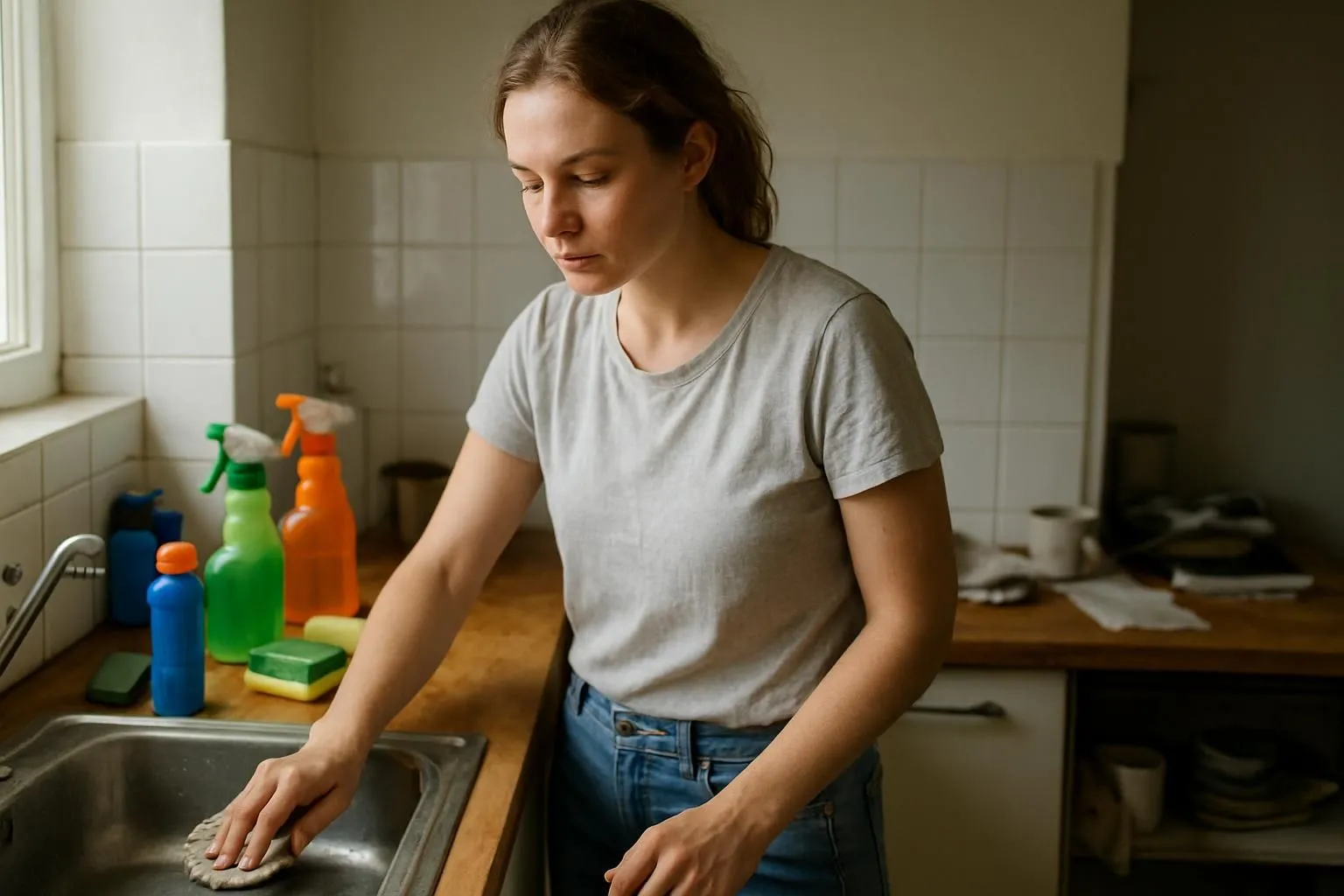
Every cleaning job gets easier when you know the right approach. These four rules work together to help anyone tackle dirt like a pro and keep germs on the run.
Time: Allowing sufficient time for cleaning agents to work
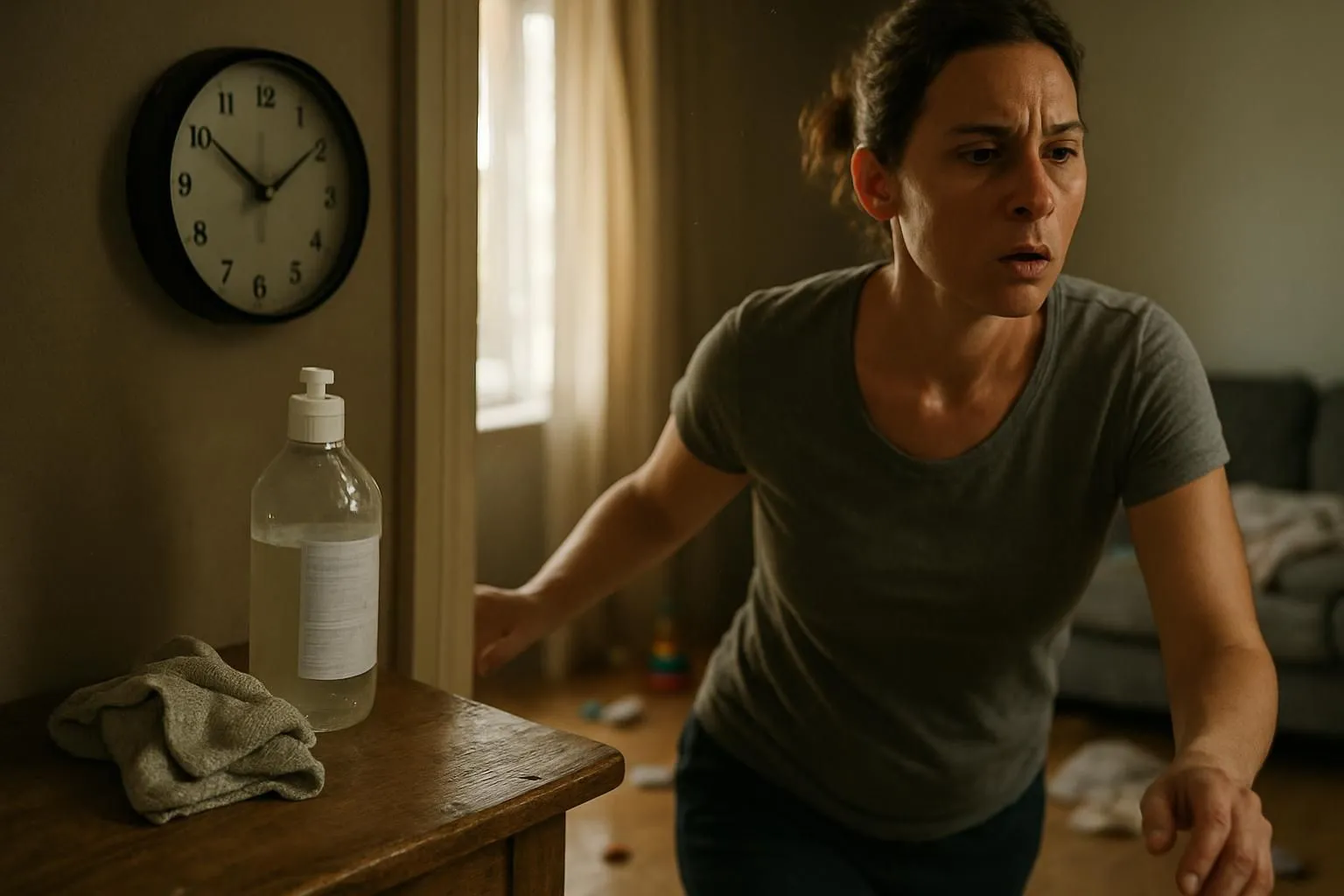
Giving cleaning agents enough time to work is a big deal in surface cleaning and infection control. Cleaning solutions need several minutes on surfaces before wiping away germs, bacteria, or dirt.
For example, some household disinfectants require at least 10 minutes to kill harmful microbes effectively. This waiting period helps fight contamination more completely.
Busy parents and house owners may rush through chores, but skipping the sit time lowers sanitation results. Routine bacteriological monitoring backs this up results often improve with increased contact time for cleaners like bleach or sanitizer sprays.
Giving products their full working window beats germs better than wiping too soon ever could.
Temperature: Using the right temperature to enhance cleaning effectiveness
A clean home needs more than just time for cleaning agents to do their magic. Temperature plays a major role too. Hot water can speed up chemical reactions, making cleaning agents work better and faster on greasy pans or sticky floors.
Many bacteria and germs find it hard to survive at higher temperatures, especially above 140 °F. Even dishwashers often rely on heat near 150 °F to sanitize dishes.
Using the correct temperature also means less scrubbing for parents after spaghetti night or muddy shoe disasters! Cold water protects delicate surfaces like wood from warping but may leave oily messes behind.
Hotter settings blast gunk off tiles and help stop pest infestations by removing leftover food particles that invite bugs inside.
Chemistry: Choosing the appropriate cleaning agents for the task
Using the right cleaning agents makes all the difference. Surfactants and emulsifiers work together to lift grease and dirt from surfaces. Solvents help dissolve stubborn stains, while de greasers tackle oily messes in kitchens or garages.
Alkaline solutions saponify fats and break down protein residue that soap alone cannot handle. Biodegradable options now offer a safer pick for homes with kids or pets without sacrificing cleaning power.
Sanitizers cut down on germs but do not remove grime by themselves; they need a clean surface first. Some agents destroy proteins as part of infection control, which helps protect family health during cold season or after cooking raw meat.
Always toss out detergent and disinfectant solutions after each use, since reused chemicals can lose their punch or leave residue behind. Picking effective cleaners sets up physical scrubbing for success, blending science with elbow grease the next principle in action: Mechanics.
Mechanics: Employing physical actions like scrubbing or rinsing
Scrubbing, rinsing, dust removal, and polishing help get rid of grime and bacteria. Good surface cleaning starts with actions like damp dusting or mopping instead of dry sweeping to avoid raising dust that can spread germs in the air.
Parents often grab a mop or brush, but it helps to know that scrubbing techniques break up stubborn dirt so cleaning agents work better.
House owners should rinse surfaces after scrubbing to get rid of both cleaners and loosened dirt. Experts recommend skipping harsh spraying because it can create harmful aerosols. For bacterial reduction during sanitation and disinfection, combine manual methods like wiping with suitable cleaning agents for best results.
Now see how these hands-on steps blend perfectly with time, temperature, and chemistry in the Sinner’s Circle model.
The Sinner’s Circle: A Holistic Model of Cleaning
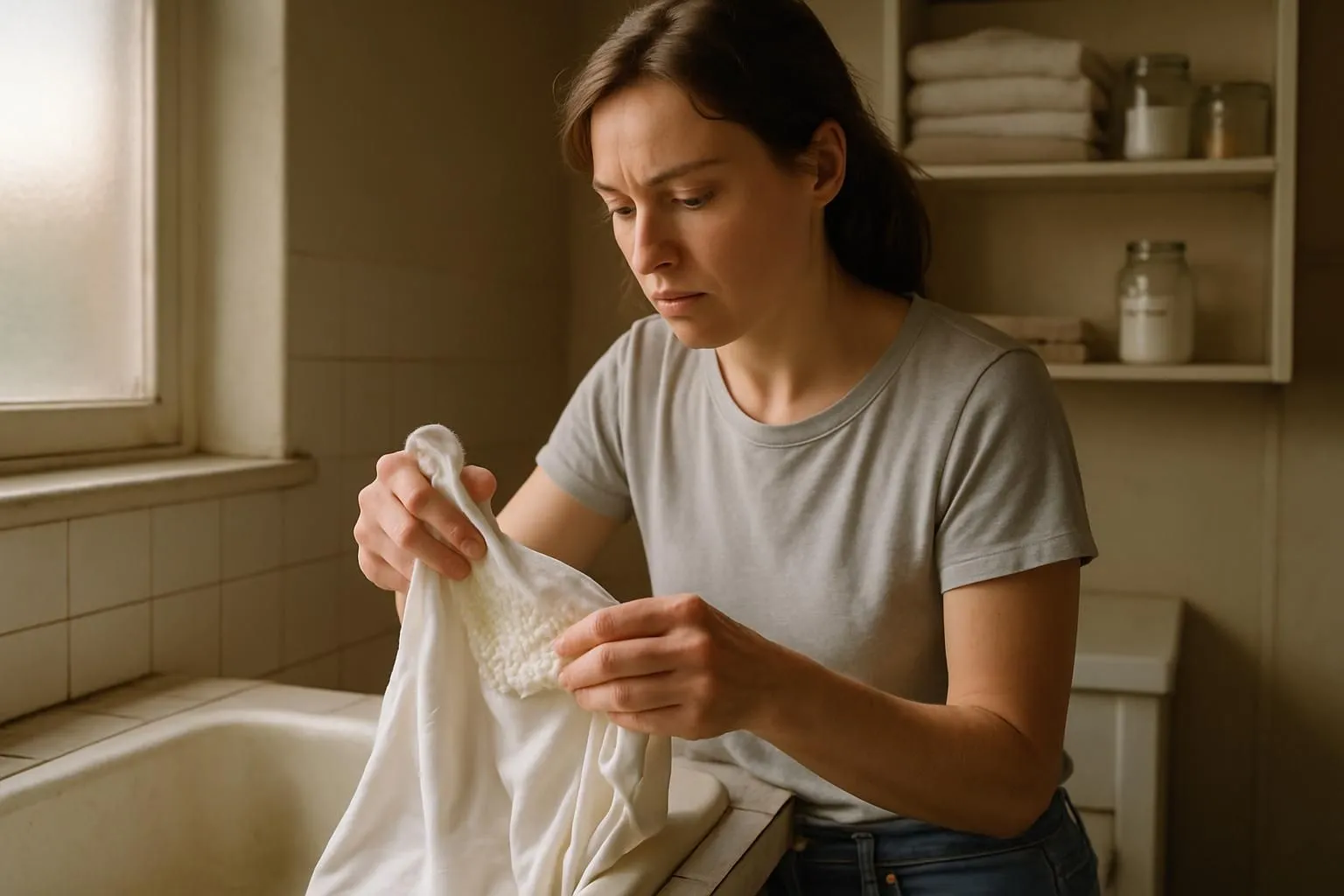
The Sinner’s Circle shows how time, temperature, chemistry, and mechanics join forces to kick dirt to the curb keep reading for details that might just change your next cleaning spree.
How time, temperature, chemistry, and mechanics work together
Cleaning works best when time, temperature, chemistry, and mechanics join forces. Soap or detergent needs enough time to break up sticky residue and suspend soil from surfaces. Warm water boosts the effect of cleaning agents by increasing solubility and surface activity; cold water can leave greasy stains behind.
Surfactants in detergents decrease water’s surface tension, helping lift fats for easy rinsing. Scrubbing with a brush or sponge speeds up this process by physically dislodging dirt particles.
Detergent and disinfectant solutions lose power after use; always discard them right away to prevent leftover microbial activity.
The Hierarchy of Cleaning
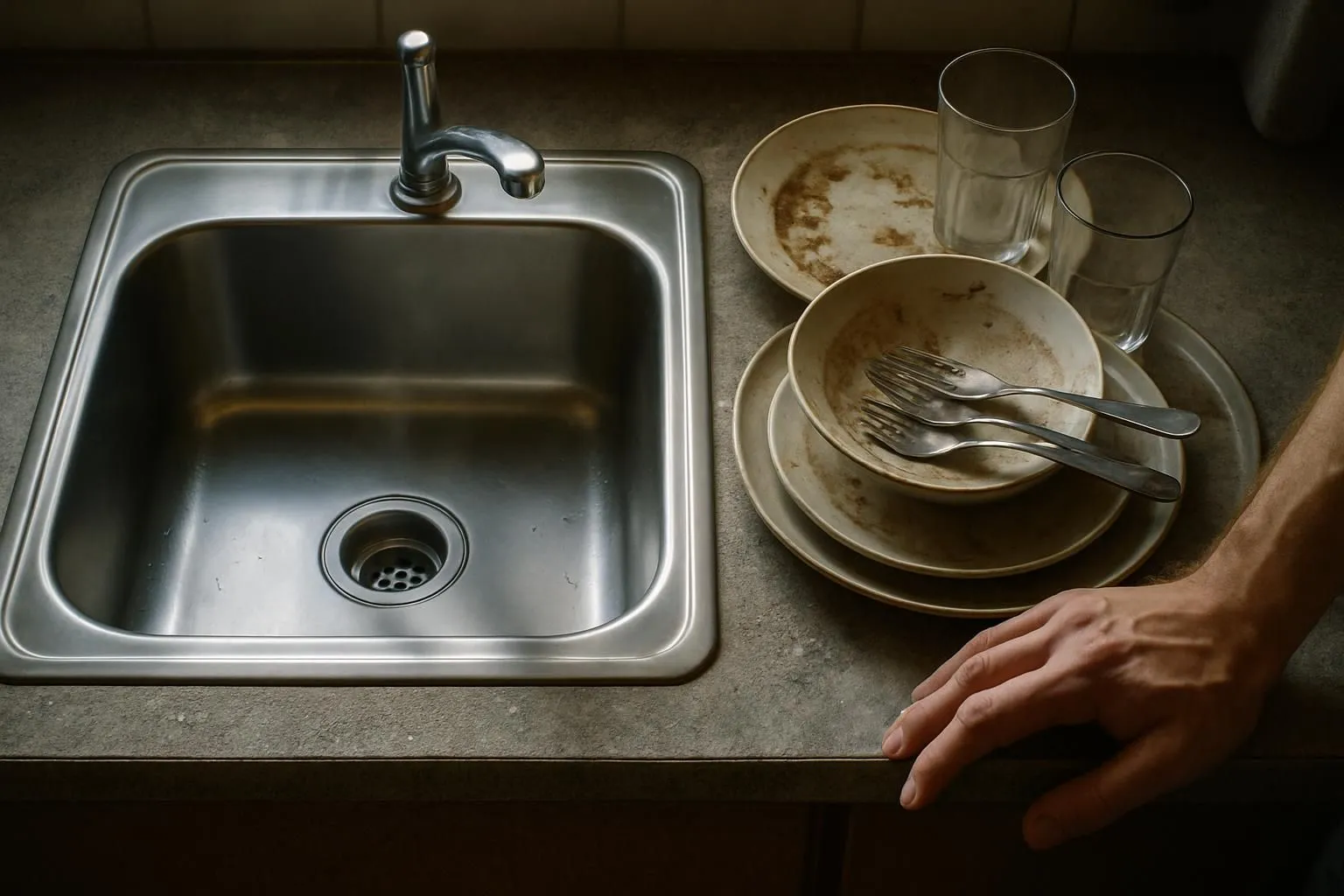
Start with the spots that are already pretty clean before moving to dirtier areas. Work from higher surfaces down so dust and grime don’t fall onto places you’ve just washed.
Cleaning from cleanest to dirtiest areas
Always tackle the tidiest spots first. For example, wipe countertops before moving on to grimy floors. This stops germs from dirtier areas spreading to cleaner ones and helps maintain top-notch hygiene in kitchens or bathrooms.
Follow this order every day, especially where food is prepped or kids play.
Daily routines should hit high-contact zones like handles and light switches early. Move next to spaces with more mess, such as under sinks or near trash bins. This method cuts down cross-contamination risks while making each cleanup session more efficient and organized.
Starting from higher levels to lower levels
Dust and crumbs love to travel down. Cleaning from higher levels to lower levels makes gravity your helper, not your enemy. Wipe shelves and cabinets first, then tackle tables and floors last.
This order stops dirt from falling onto areas you already cleaned. Parents can teach kids this trick for easier tidiness at home.
One overlooked shelf can send yesterday’s toast crumbs tumbling onto today’s mopped floor. Houses that follow cleanup rules like this keep pest control problems in check. Germs and grime do not stand a chance against such simple orderliness.
Step-by-Step Cleaning Approach
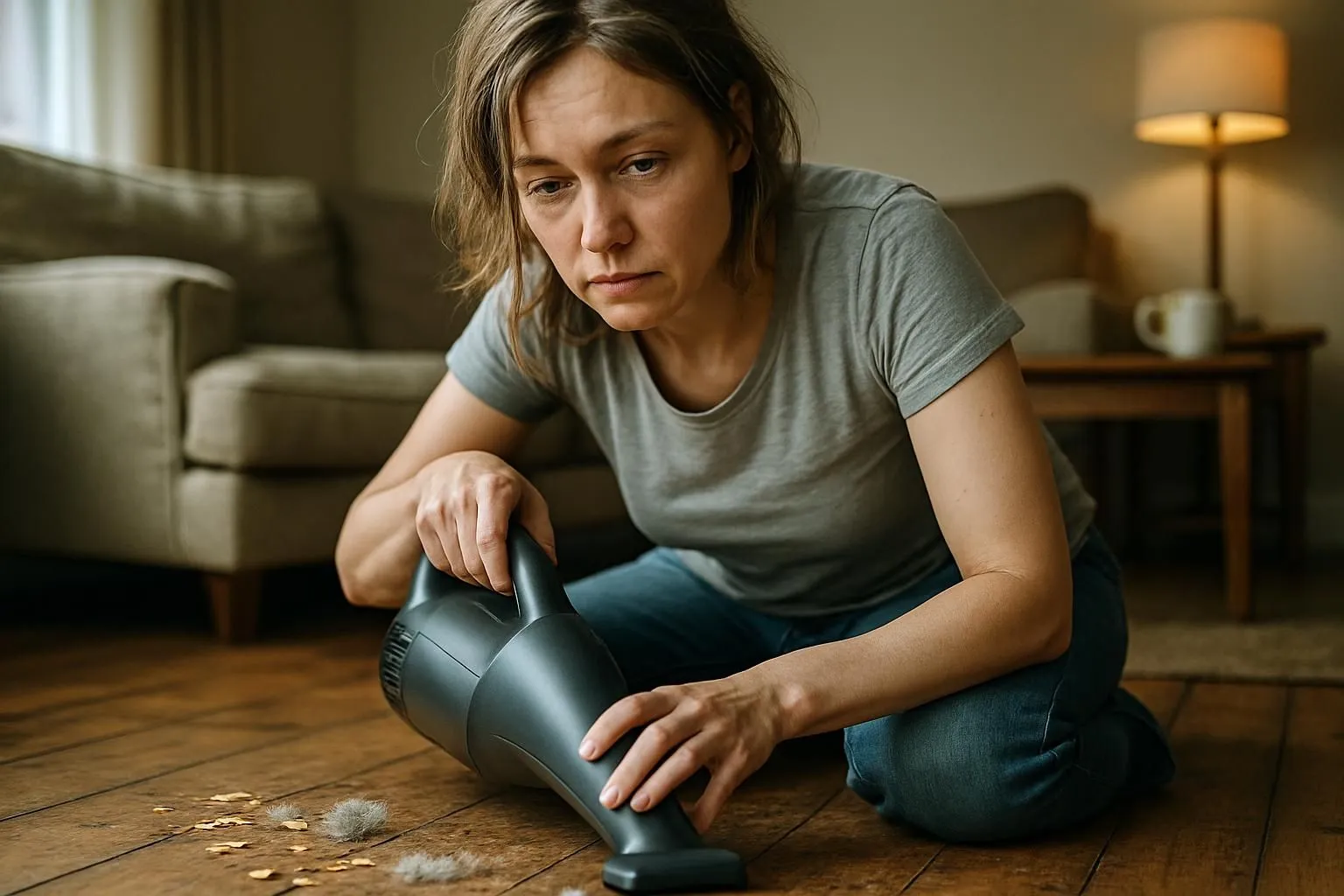
Kids splash cereal, pets shed fur, and dust sneaks in like an uninvited guest. Discover how each stage of cleaning keeps your home happier and healthier.
Removing debris and pre-cleaning
Sweeping and dusting come first. Loose debris on floors, countertops, or tables acts like a magnet for germs. Using a broom, dry cloth, or vacuum quickly clears surface messes before moving ahead.
For sticky spots or stubborn crumbs, grab a damp microfiber cloth and give it a good wipe.
Crumbs under the kitchen table do more than attract ants; they make cleaning harder later on. Parents know that mopping over dirt only spreads grime instead of removing it. Manual cleaning steps such as scrubbing corners with an old toothbrush can tackle hidden bits too small for bigger tools to catch.
Surface preparation at this stage is critical because stuck-on residue blocks cleaning agents from reaching all areas during sanitation protocols. This basic step sets the stage for better hygiene in homes large and small whether tackling daily chores or deep-cleaning after holidays.
Applying cleaning agents and allowing contact time
Spray or spread the cleaning solutions onto surfaces and give them enough time to work. Detergents do more than just lift dirt they can block biofilm from building up, which helps with surface sanitization.
Parents often rush this step and wipe too quickly, but that shortcut leaves germs behind. For best results, let disinfectants sit for several minutes as instructions say; contact time is not a suggestion but a rule in hygiene protocols.
After each use, always throw out leftover detergent and disinfectant mixtures. Reusing old solutions lowers their cleaning power and may even spread bacteria instead of removing it.
By strictly following these steps during equipment sanitization or daily kitchen cleanups, everyone at home gets better protection against hidden grime and germs lurking on counters or toys.
Rinsing and drying for a thorough finish
Water rinses away leftover soap, dirt, and cleaning agents. If even a thin layer of product stays behind, it can hurt surface protection or cause streaks. Rinse twice if you have to no shame in doing the job right,â as Uncle Mike always says at family gatherings.
Drying quickly with a clean towel prevents watermarks and mold. Some parents swear by letting surfaces air dry; others use paper towels for extra hygiene.
Using disinfectants? Mix them according to instructions or risk less sanitation and possible damage. Busy families often skip rinsing on busy days but this shortcut lowers cleaning effectiveness over time.
Homeowners who rinse and dry every day notice fewer smells and cleaner kitchens year-round.
Next up is staying safe while scrubbing, because gloves are not just for fancy chefs!
Importance of Safety in Cleaning
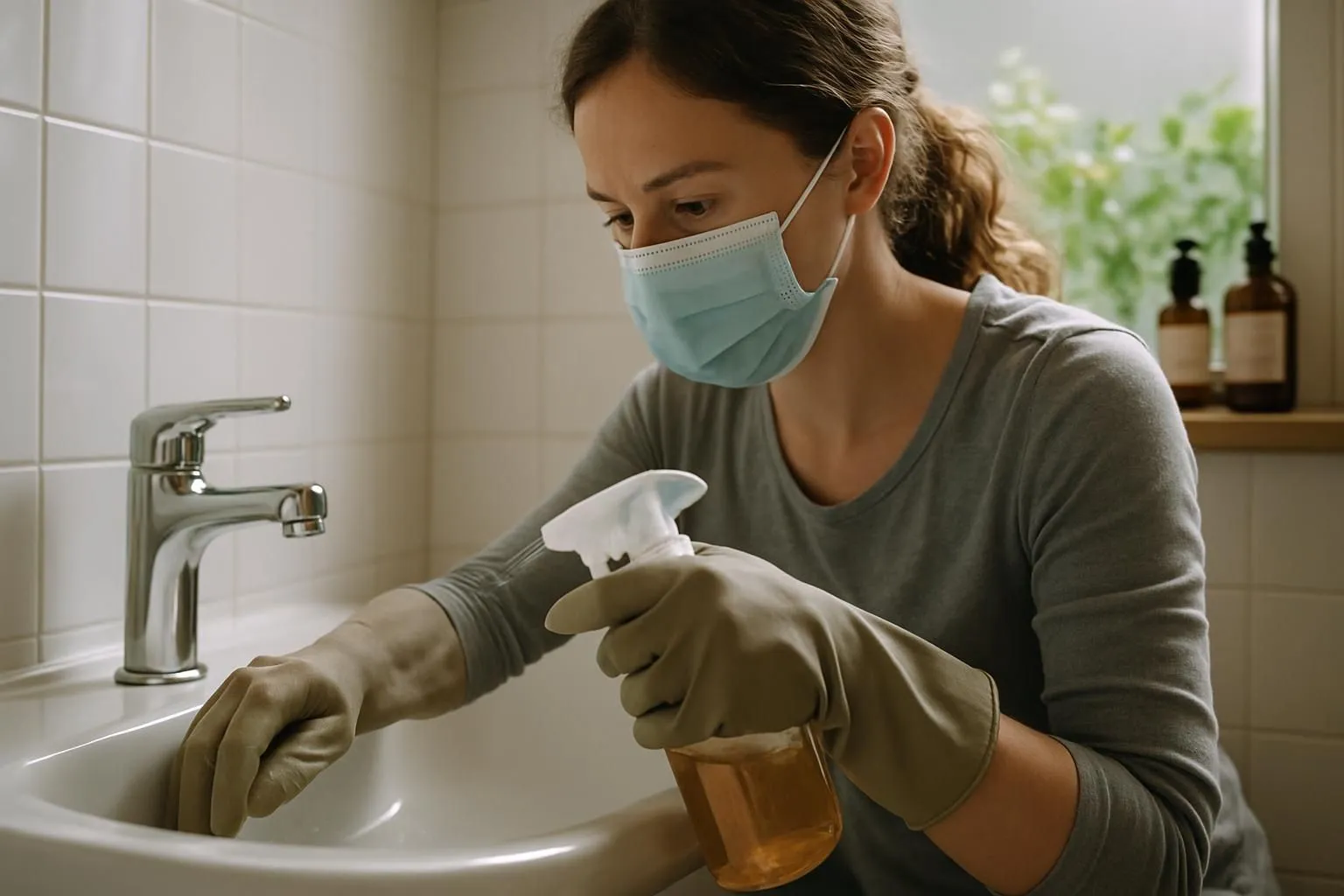
Safety in cleaning matters a to think gloves, good air, and no mystery mixes so stay sharp and dig into the next tips for keeping everyone healthy.
Using protective equipment
Gloves protect hands from harsh cleaning chemicals and rough surfaces. Goggles keep eyes safe from splashes, especially when scrubbing grout or using bleach. Masks help block out strong fumes and dust, giving lungs a break during heavy-duty chores.
Aprons shield clothing from stubborn stains and chemical spills. In 2020, the CDC found that over 5% of household chemical injuries involved children helping with chores; adults need to lead by example.
Good ventilation acts like an unseen superhero in any cleaning session. Open windows or turn on exhaust fans to keep fresh air flowing, lowering the risk of headaches or breathing problems linked to concentrated fumes.
People with allergies benefit most from protective gear such as masks and gloves because these barriers reduce contact with irritants hiding in dust or pet hair left behind after vacuuming rugs.
Handling chemicals responsibly
Parents and homeowners must treat cleaning chemicals with care. Store all cleaning agents out of reach of kids and pets, clearly labeled in their original containers. Always read labels before use because some products can cause burns or toxic fumes if mixed.
The right glove protects skin from harsh cleaners; goggles shield eyes from splashes. Make sure the room has good airflow by opening windows or turning on fans.
Match the cleaner to the surface type what works for tile may damage wood or painted walls. After using chemicals, toss used wipes and rags into a safe trash bin away from food areas.
Never pour leftover hazardous materials down drains; take them to a local disposal site instead. These steps boost workplace safety at home while also protecting air and water quality for everyone nearby.
Ensuring proper ventilation
Open windows or use fans to boost airflow while cleaning. Good ventilation helps push out fumes from strong cleaning agents like bleach and reduces chemical exposure for everyone, especially kids and pets.
Letting fresh air in also fights dust buildup on surfaces such as walls, tiles, and wood. For houses with poor indoor air quality, running an exhaust fan can sweep away airborne particles during surface treatment.
Proper airflow supports safer cleaning and protects family health by lowering the chance of allergic reactions or headaches caused by lingering vapors. Keeping dust under control means less sneezing after chores and easier breathing for those with asthma.
After safety checks are done here, handling tools for each task comes next.
Hygiene as the Ultimate Goal
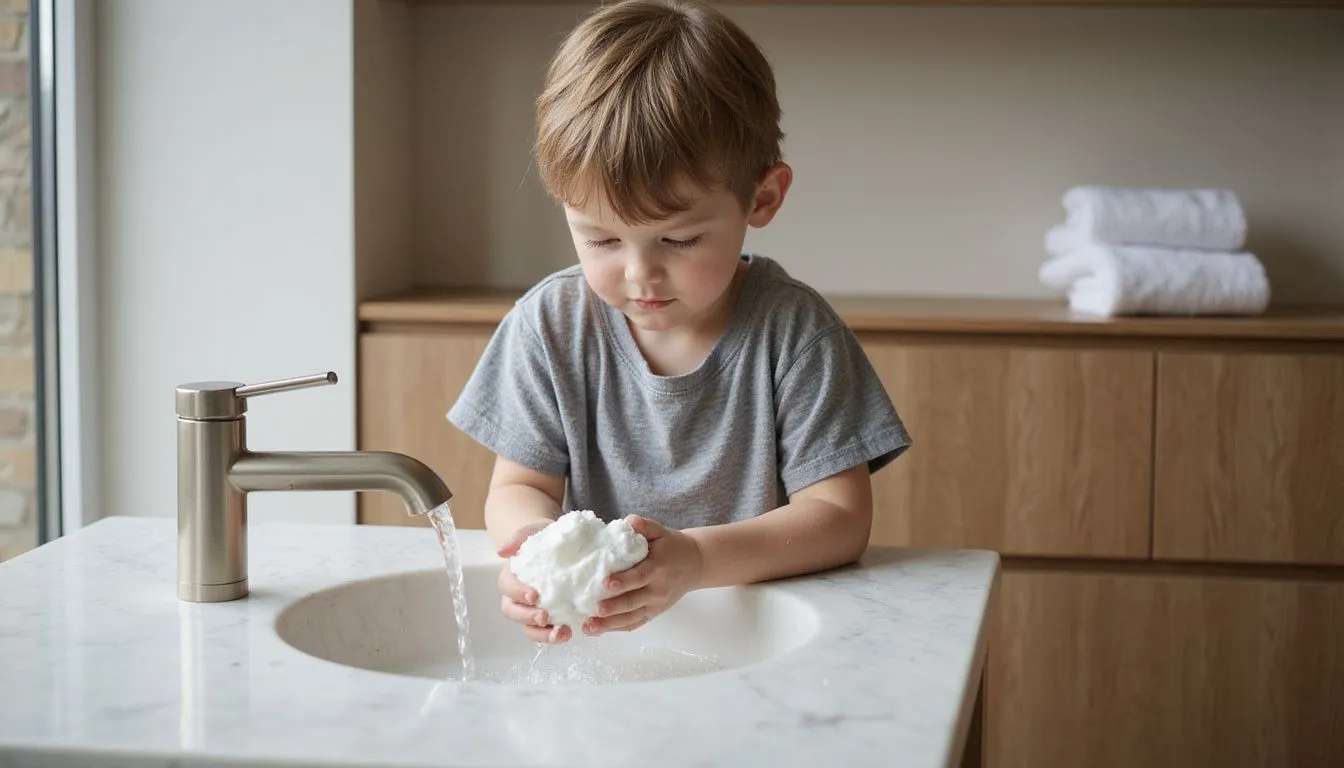
Good hygiene helps everyone stay healthy. It keeps germs from spreading and supports a safer home curious about how to make that happen? Keep reading.
Preventing cross-contamination
Bacteria and germs love to hitch a ride from dirty surfaces to clean ones. Use separate sponges for the kitchen sink and the bathroom; mixing them only spreads pathogens around your home.
Sanitation rules say you should wash hands between tasks, especially after touching raw meat or cleaning toilets. Disinfection reduces infection risks, so wipe countertops with approved sanitizers after cooking.
Children drop toys everywhere, so soak items in soap and hot water on a regular basis.
Infection control starts by keeping mops used in bathrooms far away from those meant for kitchens or living spaces. Even changing cloths often helps keep unwanted guests like dust mites at bay.
The Centers for Disease Control reports that simple habits like using gloves while handling chemicals cuts contamination rates sharply. Parents can turn this into a game award points for each time kids wash their hands before snacks! Cleanliness protects everyone under one roof by breaking the chain of cross-contamination before it begins to spread further chaos indoors.
Promoting health and safety in different environments
After setting up ways to prevent cross-contamination, keeping different spaces safe and healthy becomes the next step. Cleanliness helps keep homes free from pests and lowers infection risks by removing harmful germs.
Households with kids or pets benefit from frequent cleaning, especially in kitchens and bathrooms; some spots may need daily attention.
Using correct sanitation practices supports strong environmental health. A parent who wears gloves while handling cleaners reduces exposure to chemicals. Opening windows during disinfection helps maintain proper ventilation, making each room healthier for everyone inside.
Health regulations suggest following safety protocols like using protective gear and choosing the right products for the job. Effective maintenance keeps both dirt away and families safe day after day.
Tools and Equipment for Effective Cleaning
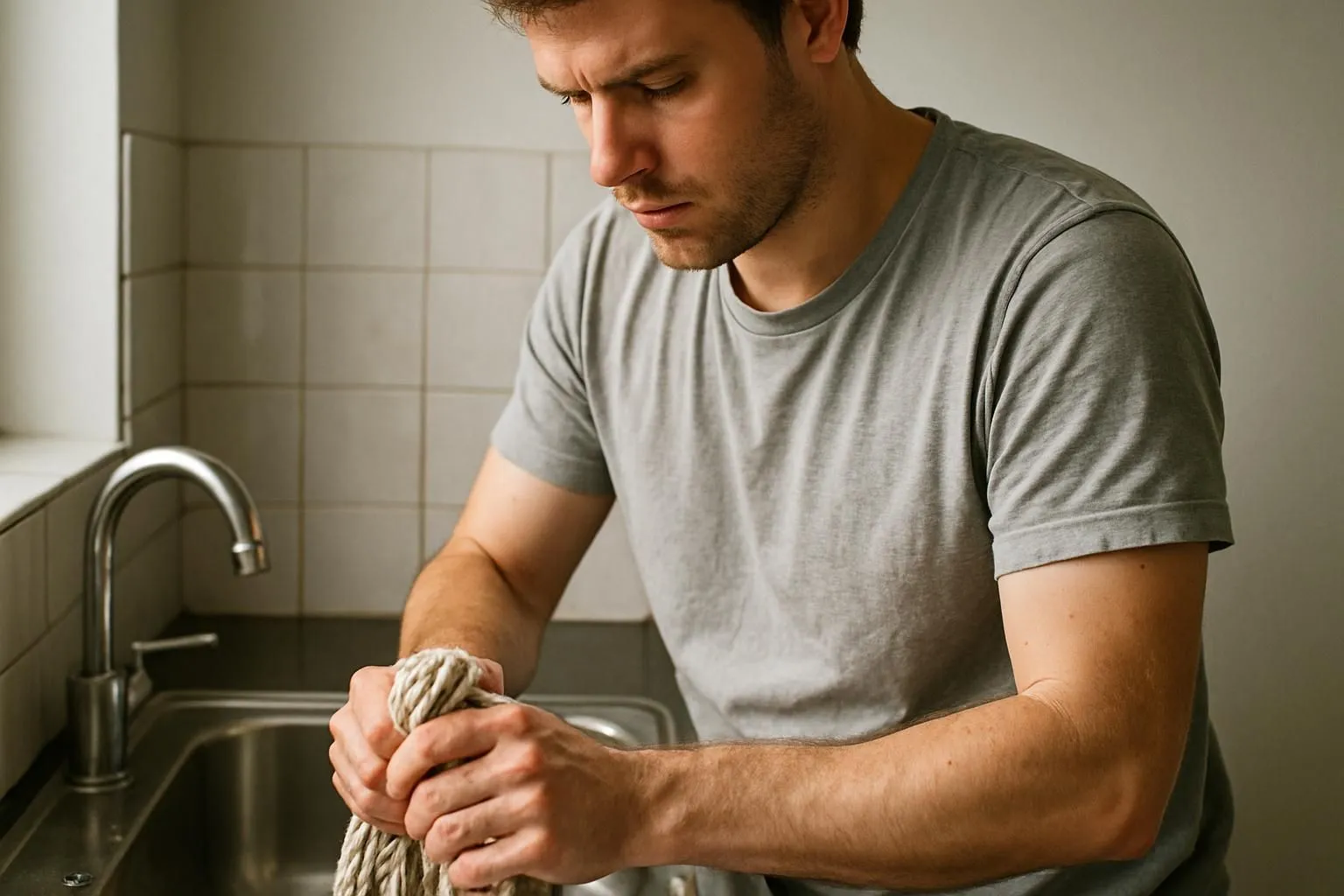
The right mop or brush can make a huge difference, almost like having the perfect sidekick for every mess. Even superheroes need to give their gear a little TLC, so never skip cleaning your tools.
Choosing the right cleaning tools for specific tasks
A good vacuum tackles carpets and pet hair much faster than a broom. Scrubbers work better on stubborn grime in the bathroom or kitchen. Parents can use soft cloths for dusting shelves but grab sturdy sponges for pots and pans duty.
Mops handle floors, but microfiber options lift more dirt with less water, keeping wood floors happy.
Sweeping crumbs away needs a regular broom, while polishing furniture calls for special wipes or sprays. Using separate sponges cuts down on cross-contamination between bathroom sinks and kitchen counters.
Investing in quality equipment like durable vacuums saves time and energy every week. Keeping tools organized helps find everything fast so cleaning feels less like chasing wild geese around the house!
Maintaining tools to ensure efficiency
Once the right cleaning tools stand ready for action, their upkeep keeps performance high. Scrubbing brushes should get a rinse after heavy use so stuck-on grime does not damage surfaces during future jobs.
Cleaning cloths benefit from hot water washes to kick out germs and odors. Vacuum filters need clearing every couple of weeks to keep suction power strong.
Bottles of detergents or disinfectants deserve a check too; expired products can lose their punch, making tasks harder than they have to be. Polishing machines and buffers will shine longer if users wipe off residue and store them dry after each session.
Suction cleaners like vacuums handle dust best with regular maintenance before blockages slow things down. Simple routines help make sure equipment supports hygiene goals while saving money on replacements in the long run.
Keeping supplies organized cuts wasted time hunting for that missing scrubber or mop head, meaning more energy goes into actual cleaning work instead of tool recovery missions!
Conclusion
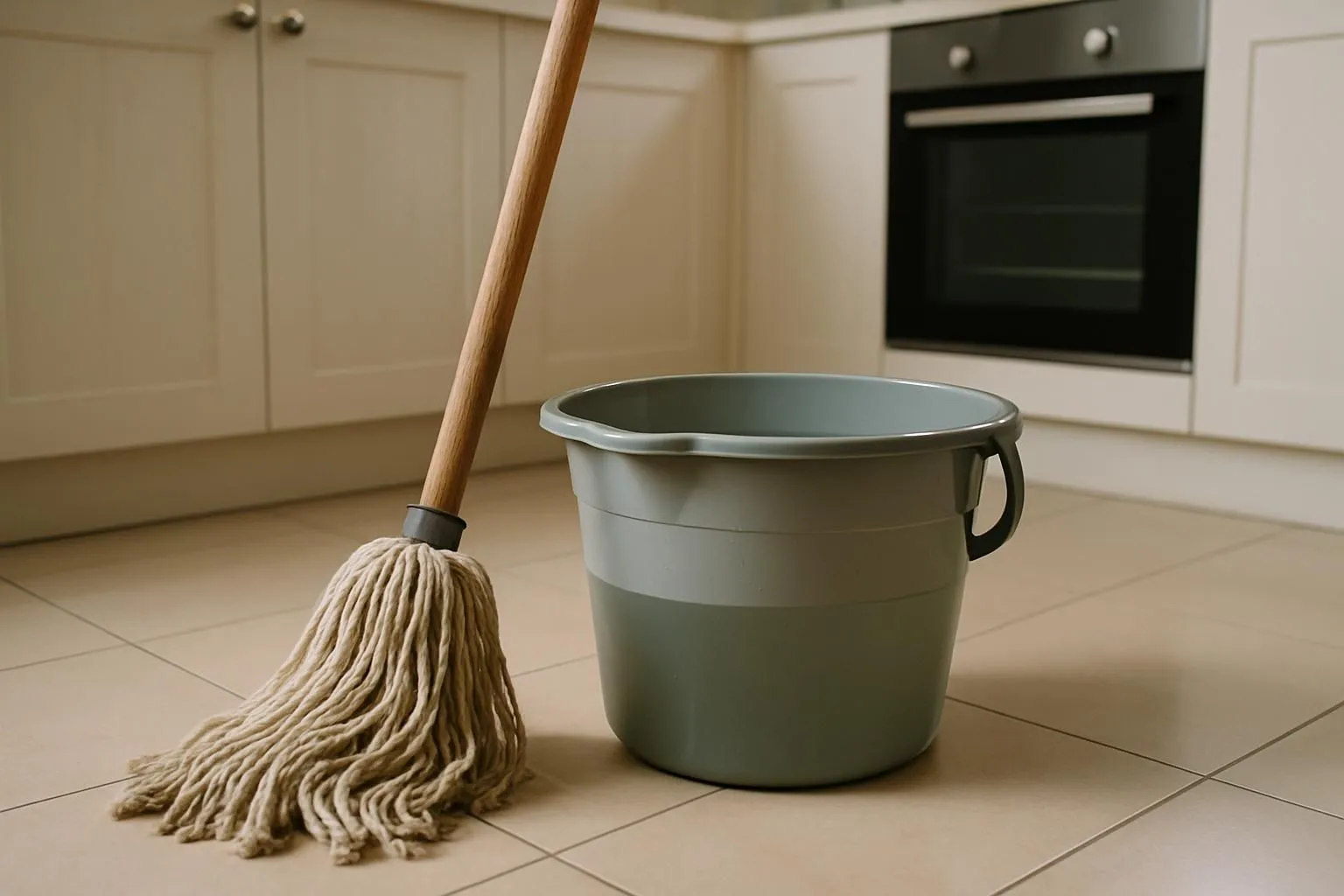
Sticking to the four principles of cleaning makes a real difference. Time, temperature, chemistry, and mechanics each play their part. They work together like teammates on a winning squad.
Anyone can tackle dust and germs with this simple recipe. A little effort mixed with know-how keeps every home fresher and safer for everyone inside.
Understanding these core principles enhances cleaning methods. Maximizing efficiency and effectiveness while ensuring safety and hygiene requires following the Sinner’s Circle model and maintaining proper organization. Applying a logical, step-by-step approach supports environmental cleaning and robust cleaning protocols. Choosing the right cleaning agents and tools improves disinfection, sterilization, and surface cleaning. These practices embody best practices and hygiene techniques for a consistently clean environment.
FAQs
1. What are the four principles of cleaning?
The four principles of cleaning include removing dirt and grime, sanitizing surfaces, checking for cleanliness, and maintaining a routine. It’s like playing a game of baseball – you’ve got to hit all the bases to score!
2. Why is it important to remove dirt and grime?
Just as we wouldn’t put on clean clothes without taking a shower first, removing dirt and grime is essential because it eliminates contaminants that could cause health problems or damage surfaces.
3. How does sanitizing surfaces fit into these principles?
Sanitizing is akin to putting up an invisible shield against germs! This principle involves using products designed to kill bacteria and viruses on surfaces, ensuring your spaces aren’t just visually clean but also hygienically safe.
4. Why do we need to check for cleanliness after cleaning?
Think about this in terms of baking a cake; would you take it out of the oven without making sure it’s fully cooked? Checking for cleanliness ensures that no spots have been missed during the initial stages of cleaning.
5. Can you explain why maintaining a routine is one of the principles?
Well, imagine if you only brushed your teeth once every few weeks – not so pleasant right? Maintaining a regular cleaning routine helps keep our living or working spaces consistently clean and reduces the buildup of dust or germs over time.

